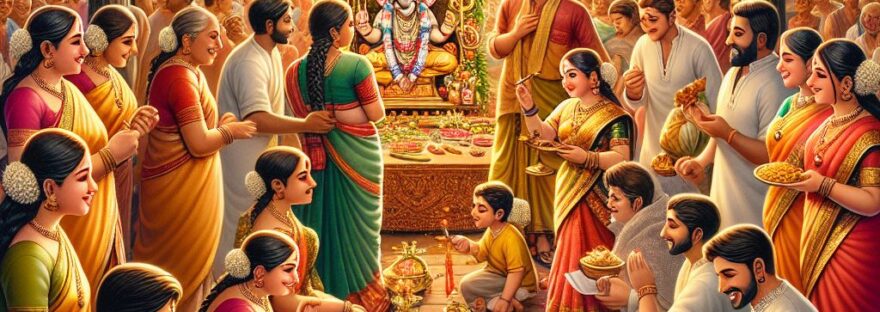I was completely absorbed in the preparations for Gowri (Maha Lakshmi/Jeshta Gowri) Pooja celebrations, which fall on the 4th, 5th, and 6th days of Ganesh Utsav, celebrated on the 21st, 22nd, and 23rd of September 2012 this year. I was also involved in making several traditional Prasadam/Naivedhyam over these three days and, of course, indulging in all the delicious food prepared. However, as I always say and practice, anything in excess is dangerous. Enjoy moderate amounts without overloading your tummy, and savor what you eat, keeping all senses in sync!
Today, I would like to share a savory dish prepared during this pooja: Vatlya Dalichi Koshimbir (Bengal Gram Dal Coconut Salad). It’s one of the simplest yet most wholesome recipes, loved by both mother and son (Ganesha and Gowri/Parvathi)! It’s also prepared on the last day of Ganesh Utsav, but you can enjoy it anytime as a nutritious snack!
Ingredients:
- Soaked Bengal Gram – 150 gm (soaked for 6-7 hours in water prior to making)
- Fresh Coconut – 100 gm, grated
- Freshly chopped coriander – 1/2 bunch
- Ginger – coarsely pounded, 1 tsp
- Cumin seeds – 1 tsp
- Mustard seeds – 1 tsp
- Curry leaves – approximately 20 leaves
- Green chillies – 2-3, as per taste
- Asafoetida – 1 tsp
- Oil – 1 tbsp
- Salt – as per taste (lesser the better!)
- Lime juice – from 1/2 lime
Instructions:
- Heat oil in a heavy-bottomed pan and add cumin, mustard seeds, and asafoetida to crackle.
- Add chopped ginger, curry leaves, and green chillies. Mix well and leave on low flame for 2-3 minutes.
- Meanwhile, drain the water from the soaked Bengal gram, rinse it well, and add it to the seasoning mix. Cook on a low flame.
- Add the grated coconut, chopped coriander, and salt as per taste. Mix well and leave on low flame for 2-3 minutes.
- Add lime juice and serve warm.
Nutritional Benefits:
- Bengal Gram: Rich in protein, carbs, fiber, minerals, and B vitamins.
- Coconut: Provides protein, calories, medium-chain triglycerides (MCT), vitamins A and E, and fiber.
- Coriander, Curry Leaves, and Green Chillies: Packed with minerals, vitamins A and C, and antioxidants.
- Cumin and Mustard Seeds: Contain essential oils and antioxidants, adding warmth and flavor.
- Asafoetida: Carminative, soothes intestines, prevents gas, and enhances flavor.
- Oil: Adds fats and calories.
This salad is a complete, wholesome food. Treat yourself to this energy and protein-packed snack and feel the difference. Just remember to pre-plan by soaking the gram and grating the fresh coconut in advance.
Please remember, anything in excess is dangerous!
Ganapathi Bappa Moriyaa! Mangal Moorthi Moriyaa!


